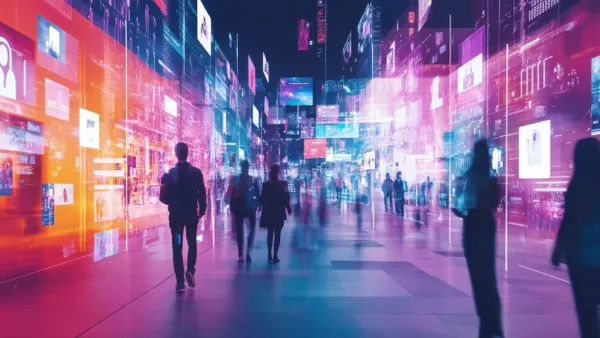Editor's note: The following is a guest post from Manolo Almagro, managing partner at Q Division, a global consultancy specializing in retail technology.
Shoptalk came out of nowhere with a debut event in May 2016 in Las Vegas, and in two short years has become a must attend for people in the retail industry, particularly those interested in technology and startups. This year, in addition to the U.S. show, Shoptalk organizers curated Shoptalk Europe, an event held in Copenhagen from Oct. 8-11 focused European-based companies.
Attendees from over 25 different countries participated in a format where startups, tech companies, brands and retailers all came together to learn and shared their experiences on how they are adapting to the ever evolving consumer behaviors and the industry disruptions.
It's clear that European retailers are facing many of the same challenges, and having similar discussions, as their U.S. counterparts.
1. The death of the physical store is greatly exaggerated
It's a big talking point in retail today — the fact that physical stores still matter greatly. Based on the fact that today’s shoppers place a high value on experiences versus owning stuff, both online and traditional retailers agree that a physical location is paramount.
"Online first" brands (like Warby Parker and Bonobos) and retailers have had great results opening their first permanent stores and pop-ups, hailing them as a critical part of their growth and the tactile component of their retail experiences.
Conversely while the traditional brick and mortar retailers continue to shutter locations, they are applying new thinking to the retail store format, testing out smaller footprints, experimenting with non-traditional locations, bringing more efficiency and thoughtful approaches to their current customer experiences. Sephora's new small store in Boston is one example, as is Nordstrom's recently opened format called Local — a showroom with no merchandise.
2. You can’t 'Out Amazon Amazon'
The words "resistance is futile" spring to mind when it comes to trying to beat Amazon at their own game (unless you are Walmart). The majority of retailers and brands have learned the hard way that they need to adapt their strategies to include the Amazon ecosystem, rather than waste resources to compete against it.
Retailers are focusing on improving operational efficiencies in-store to help with speeding up check-out, optimizing the click and collect process, and creating better experiences to address customer ROPO (Research Online, Purchase Off line) behaviors.
3. AI, Machine Learning + Conversational Commerce will steal everyone’s jobs
In the future, or at the least by 2020, Gartner predicts that 85% of all customer interaction will be handled by artificial intelligence. And if Google has their way, it could happen a lot sooner as the company is now actively promoting an "AI First" approach to everything.
As AI gets smarter — and it does everyday — technologies like natural language processing and image recognition come into play, allowing for new types of transactional chatbot based conversations on social media as well as better and more complex conversations with virtual assistants like Alexa and Google Home. Most retailers see AI in their future.
4. Retailers have new tools to get 'cozy' with their customer
A new generation of in-store analytics platforms will give retailers a more focused picture of their customers and their shopping behaviors by giving them access to more data sources. These range from better beacons, smart sensors and mobile device sniffing software that can track details about where a customer's mobile phone has been before they've even arrived at the store. The new solutions will combine both online and in-store behavior, allowing for better cross-device and cross-channel attribution.













